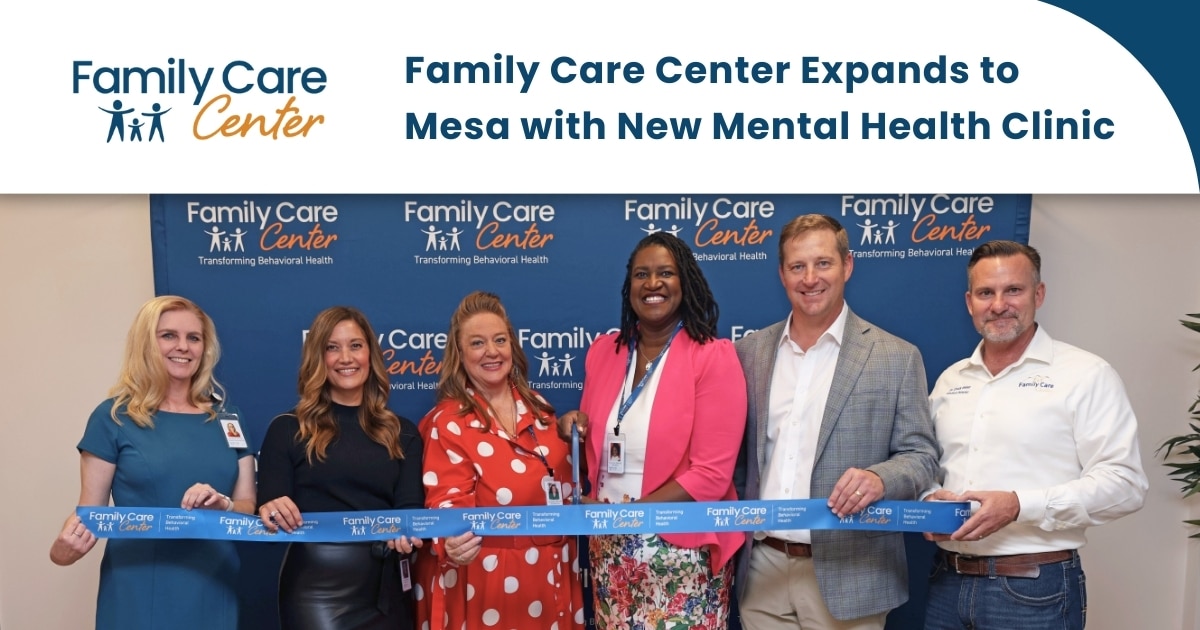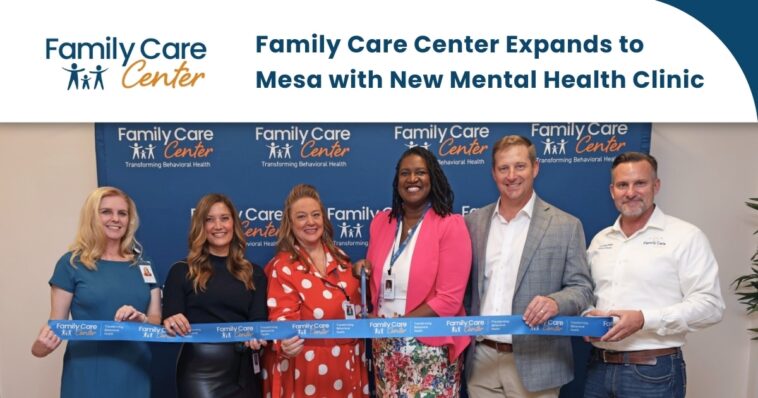
Introduction
The recent focus on statewide substance use disorder (SUD) redesigns has reawakened interest in how legal frameworks and healthcare policies work together to address public health challenges. One such example is the Missouri CSTAR Program Case Study—a venture that takes a close look at a SUD initiative from both a policy and operational standpoint. In this opinion editorial, we get into the small details of the program’s structure, review its legal underpinnings, and compare its innovative approach with recent developments in mental health clinic expansion in other regions, such as Arizona. Throughout this article, we explore the program’s potential in reworking the way treatment for substance use disorders is managed, while also taking the time to poke around the legal frameworks and government mechanisms that support such initiatives.
In today’s shifting landscape of healthcare and regulatory reform, the Missouri CSTAR program stands as one example of how a state can work through the tricky parts of SUD management. By steering through the fine points of legislative mandates and performance management details, stakeholders have shown that even the more complicated pieces of reform can be aligned to deliver better outcomes for both providers and patients. As we take a closer look at this case study, we must also remember that similar efforts have been underway elsewhere, with mental health clinics embracing innovative mixture of telehealth and traditional in-person care.
This editorial will examine key aspects of the Missouri CSTAR Program and then expand our discussion to cover related topics—including advanced performance management strategies, government contracting in healthcare, and the evolving regulatory climate. Whether you are a legal expert, a healthcare professional, or simply a concerned member of the public, understanding the subtle differences in these approaches is super important to appreciating the nuanced balance between innovation and regulation in the field of public health.
Missouri CSTAR Program: A Closer Examination of Design and Legal Framework
The Missouri CSTAR Program represents a unique approach to redesigning state healthcare systems for substance use disorder treatment. This case study has been a magnet for debate because it highlights how layered legal issues, administrative challenges, and the need for data-driven decision making intersect in modern reform efforts. One of the key considerations in this initiative is how the program finds its way through the tangled issues of traditional treatment models to incorporate more flexible, performance-oriented strategies.
When you examine the design of the Missouri CSTAR Program, you begin to appreciate the legal oversight provided by state mandates. At the core, the process involves:
- Complying with state-specific regulations regarding SUD treatment
- Ensuring providers have the required legal authorizations
- Integrating modern performance management tools into treatment protocols
- Leveraging technology in monitoring outcomes and ensuring accountability
A significant legal challenge has been managing the fine points of regulatory compliance while implementing reform that is both innovative and scalable. The program’s developers have had to figure a path through a maze of policies, ensuring that every step complies with both state law and federal guidelines. This delicate balancing act is reminiscent of steering through confusing bits of contractual and administrative language, where every new clause could potentially introduce twists and turns that affect implementation.
Below is a table summarizing some core components of the Missouri CSTAR Program from a legal and operational perspective:
| Component | Description | Legal/Operational Focus |
|---|---|---|
| Regulatory Compliance | Adherence to state and federal regulations governing SUD treatment. | Ensuring every protocol follows the current laws and guidelines. |
| Performance Management | Integration of data analytics to monitor patient outcomes. | Utilizing tools to manage and track effectiveness while satisfying legal demands. |
| Community Outreach | Engagement with local communities to educate and facilitate treatment access. | Ensuring that all community partnership agreements are transparent and legally sound. |
| Technology Integration | Use of telehealth and electronic health records. | Meeting privacy and security regulations such as HIPAA. |
The table illustrates how each component of the program is designed to address both operational and legal challenges. As stakeholders work through these issues, their ability to find your way within the legal framework is critical. The task of merging performance management with regulatory adherence has been both exciting and nerve-racking, highlighting that every new initiative carries with it a series of complicated pieces that must be managed with care.
Innovative Strategies in Substance Use Disorder Program Redesign
Beyond its legal framework, the Missouri CSTAR Program is heralded for its creative tactics in addressing SUD treatment. Analyzing the project, one notices that the program managers weren’t intimidated by the twists and turns of traditional treatment methods. Instead, they took a closer look at the entire spectrum of possibilities, diving into aspects of care that many overlooked in the past. Their approach not only addressed immediate patient needs but also paved the way for sustainable, long-term reform.
Key strategies implemented by the program include:
- Data-Driven Decision Making – Using performance management metrics to measure effectiveness in real time.
- Integrated Care Models – Blending traditional treatment with innovative telehealth platforms to broaden access.
- Legal Agility – Formulating flexible policies that can adapt to evolving regulatory requirements.
- Collaborative Partnerships – Engaging multiple agencies and providers to build a network of care.
The initiative’s focus on data allows policymakers, clinicians, and legal experts to spot the small distinctions that could lead to broader changes. When comparing similar programs across the nation, it becomes evident that the Missouri CSTAR Program uses legal and operational innovation in tandem—a quality that many other initiatives could emulate if they are to successfully get around the many regulatory hurdles.
This innovative thrust is further supported by the program’s commitment to community engagement. By actively involving local stakeholders in the decision-making process, the program has been able to build a support system that is both resilient and adaptable. This approach highlights the importance of finding your way through tricky parts where every new idea requires careful legal vetting and the willingness to experiment with non-traditional methods.
Moreover, the integration of modern technology plays an essential role in increasing accountability and ensuring that the program’s outcomes are measurable. By weaving performance management metrics into everyday operations, the Missouri CSTAR Program sets a benchmark for how future SUD programs might evolve. It is this combination of creative strategy, legal prudence, and operational agility that positions the program as a front-runner in statewide SUD redesign.
Insights into Mental Health Clinic Expansion in Arizona
While the Missouri CSTAR Program provides a compelling case study in SUD redesign, parallel developments in other states offer fresh perspectives on integrated care. One notable example is Family Care Center’s recent announcement about opening their third mental health clinic in Peoria, Arizona, which similarly tackles both traditional and modern delivery models for public health services.
Family Care Center’s new facility illustrates a multifaceted approach: it not only offers in-person mental health services but also embraces telehealth to extend its reach. The clinic’s design includes full-service treatment offerings such as therapy, psychiatry, and even transcranial magnetic stimulation (TMS) for conditions like depression and obsessive-compulsive disorder. With service capabilities targeting both youth and adults, the center stands as an example of how integrating data-driven practices with conventional treatment methods can create a more robust network of support.
Here are some of the primary features of the Arizona mental health clinic:
- Telehealth Integration: Enabling remote consultations that increase access for patients unable to travel.
- Evidence-Based Practices: Utilizing proven methods such as TMS to address mental health challenges.
- Service Diversity: Offering a broad spectrum of care from routine therapy sessions to advanced psychiatric treatment.
- Accessibility: Catering to both adults and youth, ensuring a comprehensive care model that addresses age-specific needs.
The expansion in Arizona underscores the growing trend of integrating modern technology with traditional care models. Much like the Missouri CSTAR Program, it shows that even when faced with the confusing bits of healthcare law and administration, innovative solutions can emerge that significantly enhance service delivery.
From a legal perspective, the expansion of mental health clinics involves rigorous attention to regulatory mandates and the careful management of operational risks. For example, ensuring compliance with telehealth laws and HIPAA privacy standards involves working through a series of regulated checkpoints—a process that can be overwhelming if not managed with precision. Clinics are required to figure a path that satisfies legal obligations while still being adaptive to patient needs.
In comparing the Missouri SUD redesign with mental health clinic expansion initiatives, we see a common thread: the drive to modernize outdated systems while adhering to complex legal protocols. Both case studies demonstrate how critical it is to integrate performance management with flexible legal strategies. In this way, they help shape a future where healthcare innovations are not stalled by regulatory red tape but are propelled forward by thoughtful, well-managed reforms.
Linking Performance Management in Healthcare Legal Context
One element that consistently emerges when examining both the Missouri CSTAR Program and the expansion of mental health services is the vital connection between performance management and legal compliance. Institutions such as the OPEN MINDS Performance Management Institute serve as hubs for best practices, bridging the gap between strategic advice and execution. By embracing this combination, healthcare institutions can ensure that even the most complicated pieces of operational change meet the required legal standards.
Performance management in healthcare extends beyond tracking numbers—it involves a detailed analysis of how policies translate into real-world outcomes. Institutions working in this arena must sift through the fine details of contract negotiations, regulatory deadlines, and compliance issues that are riddled with tension. The commitment to operational excellence is clear when one considers how performance metrics can be aligned with legal benchmarks, ensuring that patient outcomes remain at the forefront of innovation.
Some key aspects of performance management in this legal context include:
- Data Analytics: Implementing robust systems to track performance measures which facilitate compliance audits.
- Strategic Planning: Deploying measurable goals that are in line with emerging healthcare mandates.
- Legal Oversight: Constant monitoring to ensure that operational models meet both state and federal legal requirements.
- Best Practice Sharing: Using institutes like OPEN MINDS to disseminate successful strategies and overcome nerve-racking legal hurdles.
To further explain the role of performance management in the legal domain, consider the following table that organizes these aspects in an easily digestible format:
| Performance Management Element | Operational Impact | Legal Considerations |
|---|---|---|
| Data Analytics | Real-time monitoring of treatment outcomes | Ensuring data privacy and compliance with HIPAA |
| Strategic Planning | Setting clear goals for program improvement | Aligning objectives with state and federal guidelines |
| Legal Oversight | Reviewing operational protocols continuously | Mitigating risks associated with noncompliance |
| Best Practice Sharing | Improving service delivery through collaborative methods | Establishing standardized procedures that meet legal requirements |
This table encapsulates how performance management does not exist in a vacuum; rather, it is interdependent with rigorous legal oversight. For legal professionals and healthcare administrators alike, the ability to merge these considerations into one coherent model is a game-changer. It paves the way for initiatives that are not only data-driven and innovative but also robust enough to stand up to legal scrutiny. In this realm, success is predicated on managing your way through both metric-driven strategies and static regulatory frameworks—a balancing act that demands close attention to every little twist in the process.
Government RFP & Contract Mechanisms in Healthcare Reform
Another critical factor in modern healthcare reform is how government Request for Proposals (RFPs) and contract databases are utilized to leverage change. The Missouri CSTAR Program, along with other state and local initiatives, frequently relies on these government mechanisms to secure funding and ensure accountability. For legal experts and healthcare administrators, understanding these mechanisms is super important because they can dictate the pace and scope of innovation.
Government RFPs serve as a structured pathway for organizations to propose innovative solutions backed by public funds. They are designed to encourage competition, transparency, and, ultimately, improvement in service delivery. When agencies like those behind the Missouri CSTAR Program work within these parameters, they must figure a path through extensive documentation and detailed submission requirements that are often full of problems and off-putting legal language.
The challenges posed by government contracting include:
- Document Complexity: Proposals often contain many complicated pieces that require clear, concise responses.
- Compliance Verification: Ensuring that every aspect of a submission adheres to regional legal standards.
- Competitive Bidding: Navigating a nerve-racking environment where every proposal is carefully scrutinized.
- Performance Standards: Meeting pre-established criteria that measure both operational effectiveness and legal compliance.
Integrating government contracting into healthcare reform is not a straightforward process. Organizations must work through the subtle parts of extensive submission processes, negotiate legal terms, and consistently produce output that satisfies strict criteria. For many, this means diving into contract databases, such as the OPEN MINDS Government RFP & Contract Database, which serves as a key tool in streamlining access to critical information. Using these resources wisely can allow organizations to align their innovations with the expectations set by public agencies.
The relationship between government contracting mechanisms and healthcare reform is a testament to how changing regulations can foster both creativity and accountability in service delivery. As agencies continue to shape the legal landscape, the role of government RFPs will remain a central piece in the puzzle of modernizing public health initiatives. For policymakers, striking the right balance between rigidity and flexibility in these contracts is fundamental in ensuring that programs like CSTAR and mental health clinic expansions can deliver effective and legally sound outcomes.
Conclusion: The Future of Statewide SUD Laws and Management
As we draw this discussion to a close, it is evident that statewide programs such as the Missouri CSTAR initiative and regional innovations like the Family Care Center’s mental health clinic expansion are not isolated developments but rather parts of a larger conversation around healthcare reform. Both case studies demonstrate that even when the legal landscape is loaded with issues and the administrative path is full of confusing bits, creative strategies can nonetheless be implemented to enhance care delivery. The transformation seen in these initiatives is not only a testament to innovative thinking but also a reflection of how modern legal and performance management practices can be merged to produce revolutionary results.
Legal professionals, policy makers, and healthcare administrators must all take a closer look at these models to figure a path through the tangled issues of regulatory compliance and operational efficiency. Whether it is through on-the-ground initiatives such as the Missouri CSTAR Program or through government contracting and RFP mechanisms, the underlying message is clear: modern healthcare reform requires an agile blend of creativity, legal oversight, and commitment to quality service delivery.
Future developments in the field will likely depend on the continued collaboration between legal experts and healthcare providers. In an environment increasingly defined by changing regulatory frameworks and data-driven decision making, fostering open dialogue and sharing best practices will remain key strategies. Institutions that can fluidly integrate modern performance management approaches with rigorous legal standards are in the best position to lead the way forward.
To summarize some main points:
- Statewide initiatives like the Missouri CSTAR Program showcase the importance of blending innovative treatment approaches with strong legal frameworks.
- Integrating performance management tools is super important for ensuring transparency and compliance in healthcare reforms.
- Government RFPs and contract mechanisms remain a backbone for funding and accountability, demanding both creativity and thorough legal compliance.
- Similar trends in mental health clinic expansions, such as those seen in Arizona, signal a nationwide movement toward integrating technology and traditional care models.
- The future of healthcare reform will rely on the ability of stakeholders to work through regulatory challenges while embracing data-driven, innovative solutions.
Overall, the complex yet promising world of statewide SUD redesigns and integrated behavioral healthcare initiatives looks set to continue evolving. Legal insights, innovative strategies, and robust performance management systems will define the path ahead, ensuring that programs not only satisfy strict regulatory standards but also deliver tangible benefits to those in need. By taking the wheel and managing your way through these daunting policy challenges, stakeholders can unlock a future where both innovation and accountability drive the improvement of public health services.
As we look to tomorrow, it is clear that effective healthcare reform is not just about overcoming legal hurdles—it is about reimagining and reconstructing systems in a way that benefits all parties involved. With initiatives like the Missouri CSTAR Program paving the way and successful models emerging across the country, there is every reason to be optimistic about the future of public health. The journey may be loaded with challenges and filled with intricate legal language, but the potential rewards—a more equitable, efficient, and effective system—are well worth the effort.
Originally Post From https://openminds.com/market-intelligence/bulletins/family-care-center-opens-third-arizona-mental-health-clinic/
Read more about this topic at
Transforming care delivery
Transforming Care Delivery through Health Information …


